Teaching Number and Place Value with Busy Things
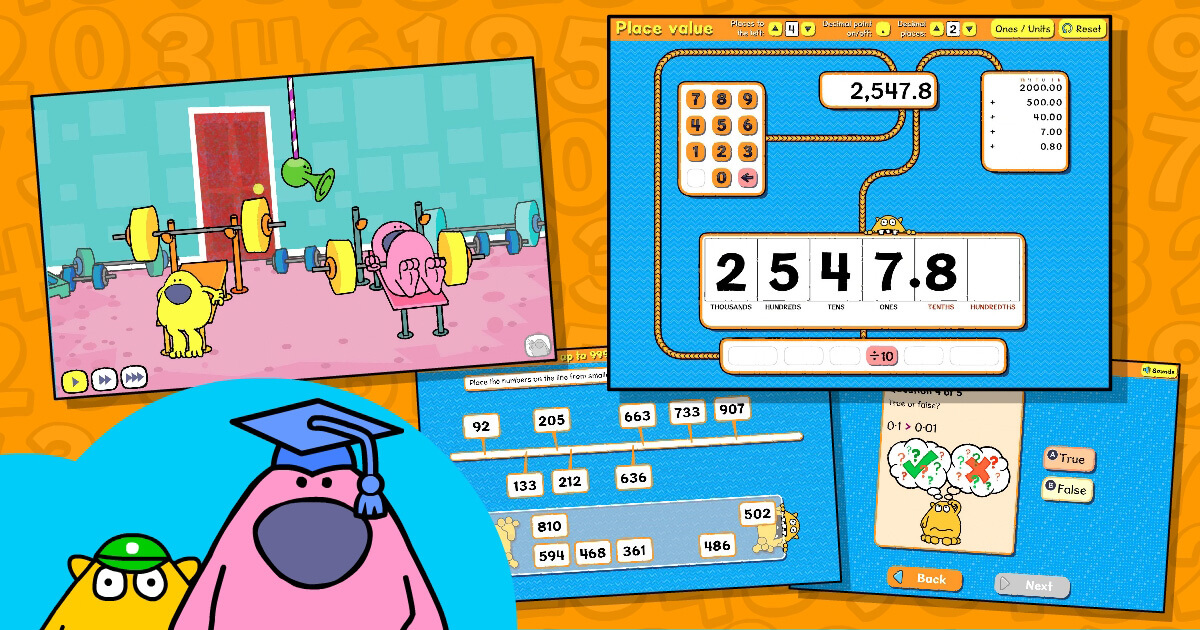
Place value has to be one of the most important areas of the primary maths curriculum. It underpins addition, subtraction, multiplication and division, and is a skill that is essential in everyday life. From following a recipe and paying a bill to keeping within the speed limit when driving, understanding the value associated with a number’s placement is critical.
Here at Busy Things, we understand how best to build on pupils’ skills year after year. That is why, in line with the National Curriculum, we have a wealth of activities and games to support you teach, and your pupils master, every learning objective along the way.
In this blog, we highlight some of the key areas for each year group and give you a free activity to play so that you can see how each learning objective is addressed. As indicated before, we have activities and games for every learning object for place value, so feel free to explore further by taking a free trial of Busy Things here.
Place value widget
Our Place value widget is a great tool for teachers to use on a whiteboard at the front of the class and is central to our place value activities. No matter the age of the pupils you’re teaching, you’ll be able to use the tool and help the children learn through experimentation.
By entering a number via the keypad, you’ll be able to highlight how:
a) a number is partitioned in the box on the right and
b) it can be arranged into columns of ones, tens, hundreds etc. in the centre panel.
By using the times and divide buttons at the bottom, you’ll be able to demonstrate the impact this has on a number’s place values.
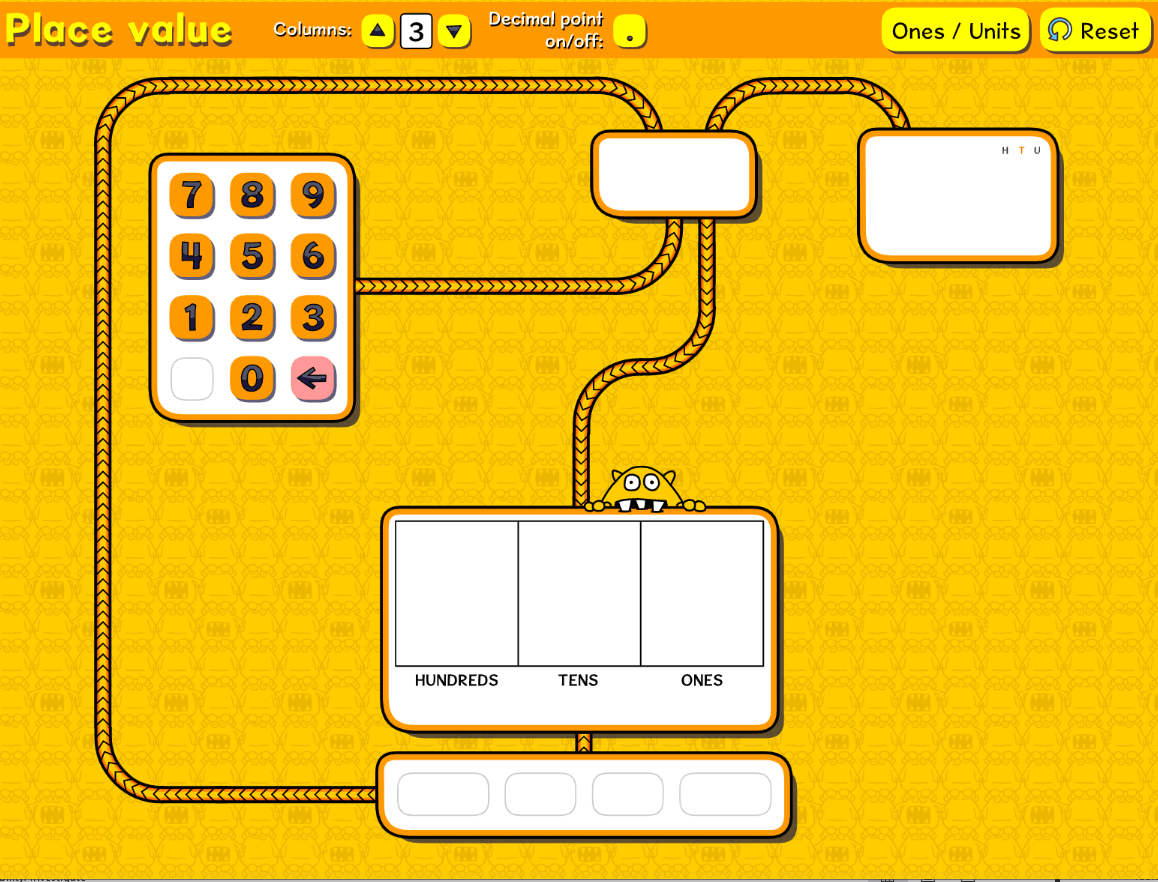
NOTE: You can use the buttons in the header bar to control how many place values to work with and whether you want to include decimal places or not.
Year 1
In Year 1, pupils should be able to:
- Count to and across 100, forwards and backwards, beginning with 0 or 1, or from any given number
- Count, read and write numbers to 100 in numerals; count in multiples of twos, fives and tens
- Given a number, identify one more or one less
- Identify and represent numbers using objects and pictorial representations including the number line and use the language of: equal to, more than, less than (fewer), most, least
- Read and write numbers from 1 – 20 in numerals and words
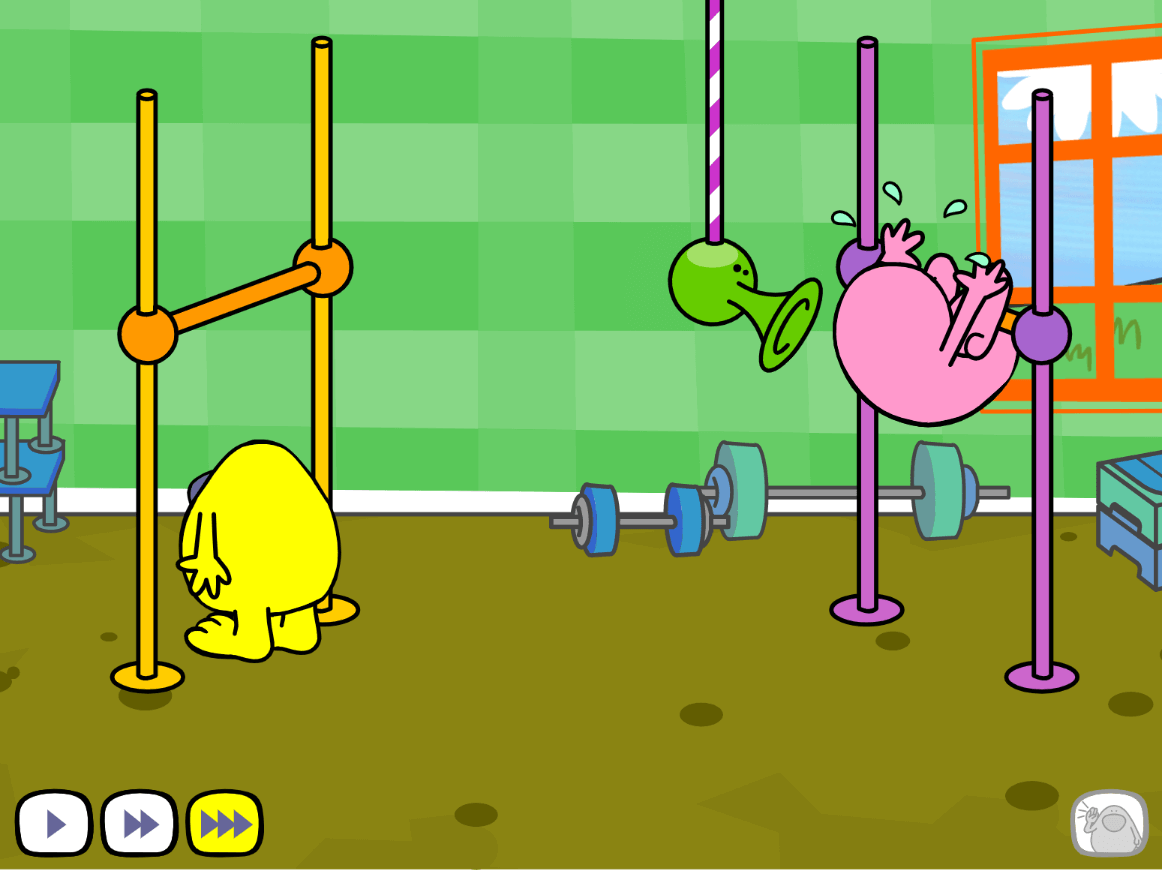
Number gym on Busy Things is a fun activity to play to help children focus on early counting skills.
The children need to count the number of exercises that the yellow man completes in order to ensure the pink man does the same.
Year 2
In Year 2, pupils need to be able to:
- Count in steps of 2, 3 and 5 from 0, and in tens from any number, forwards and backwards
- Recognise the place value of each digit in a two-digit number (tens, ones)
- Identify, represent and estimate numbers using different representations, including the number line
- Compare and order numbers from 0 up to 100; use <, > and = signs
- Read and write numbers to at least 100 in numerals and in words
- Use place value and number facts to solve problems
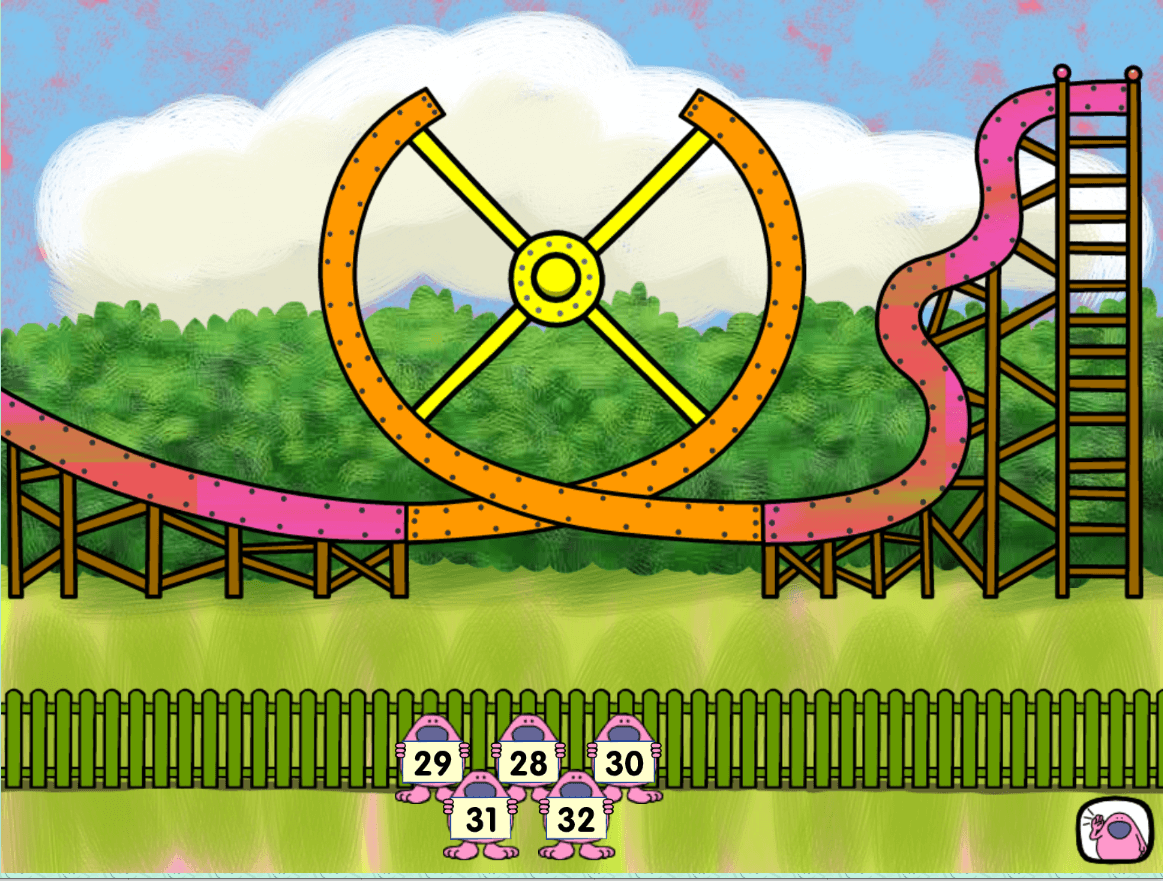
Busy Things’ game, Rollercoaster – ordering, is a great game to help children compare and order numbers as the name suggests.
The children will love sending the pink men down the rollercoaster and hearing them squeal in delight!
Year 3
In Year 3, pupils should be able to:
- Count from 0 in multiples of 4, 8, 50 and 100; find 10 or 100 more or less than a given number
- Recognise the place value of each digit in a three-digit number (hundreds, tens, ones)
- Compare and order numbers up to 1000
- Identify, represent and estimate numbers using different representations
- Read and write numbers up to 1000 in numerals and in words
- Solve number problems and practical problems involving these ideas
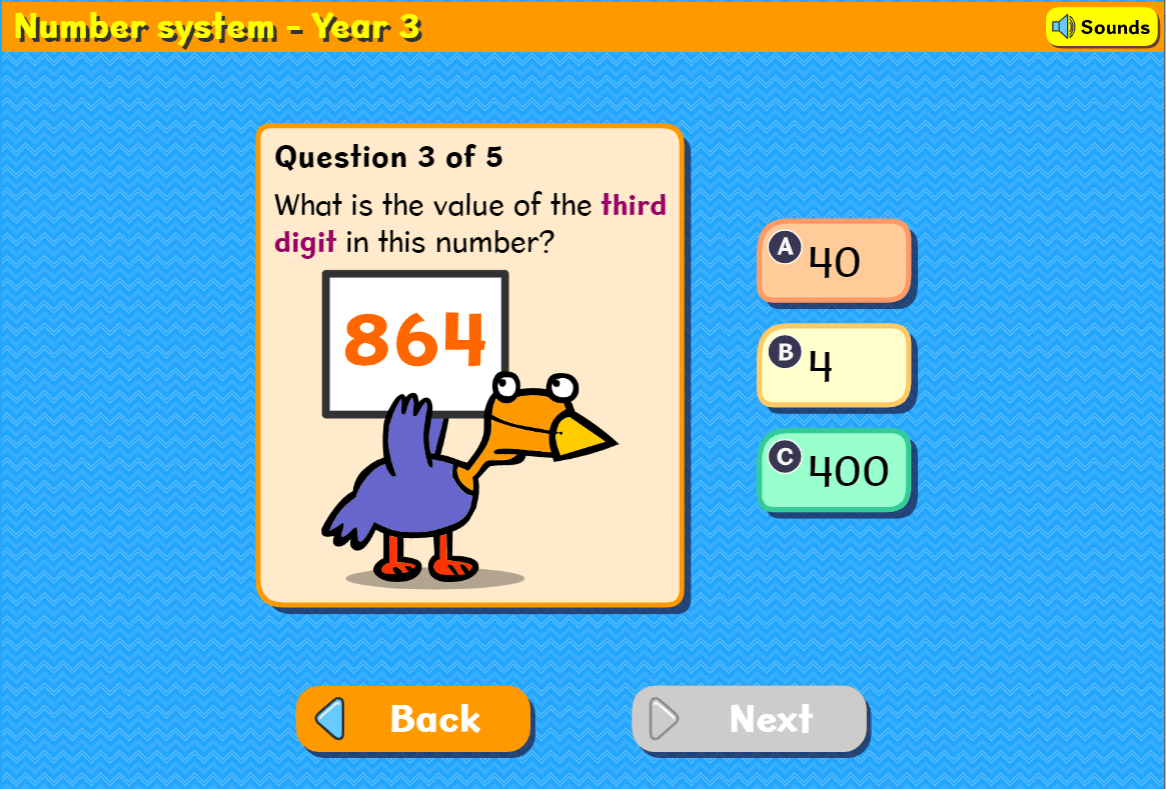
Busy Things’ Number system quiz will help your pupils with the majority of these learning objectives.
Assign the multiple-choice quiz to your pupils to ensure they all get the exact same questions. Once results are in, it will give you great insight into where they are with their learning!
Year 4
In Year 4, pupils need to be able to:
- Count in multiples of 6, 7, 9, 25 and 100
- Find 100 more or less than a given number
- Count backwards through zero to include negative numbers
- Recognise the place value of each digit in a four-digit number (thousands, hundreds, tens and ones)
- Order and compare numbers beyond 1000
- Identify, represent and estimate numbers using different representations
- Round any number to the nearest 10,100 or 1000
- Solve number and practical problems that involve all of the above and with increasingly large positive numbers
- Read Roman numerals to 100 (I to C) and know that over time, the numeral system changed to include the concept of zero and place value
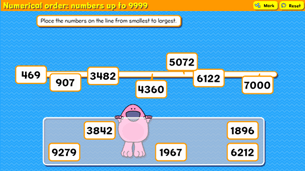
Our Numerical order: numbers up to 9999 interactive worksheet activity is a great exercise to test your pupils’ ordering and number comparison skills.
All they need to do is drag and drop the numbers onto the number line so that they are ordered from smallest to largest.
Year 5
In Year 5, pupils should be able to:
- Read, write, order and compare numbers to at least 1 000 000 and determine the value of each digit.
- Count forwards or backwards in steps of powers of 10 for any given number up to 1,000,000
- Interpret negative numbers in context, count forward and backwards with positive and negative whole numbers, including through zero
- Read Roman numerals to 1000 (M) and recognise years written in Roman numerals
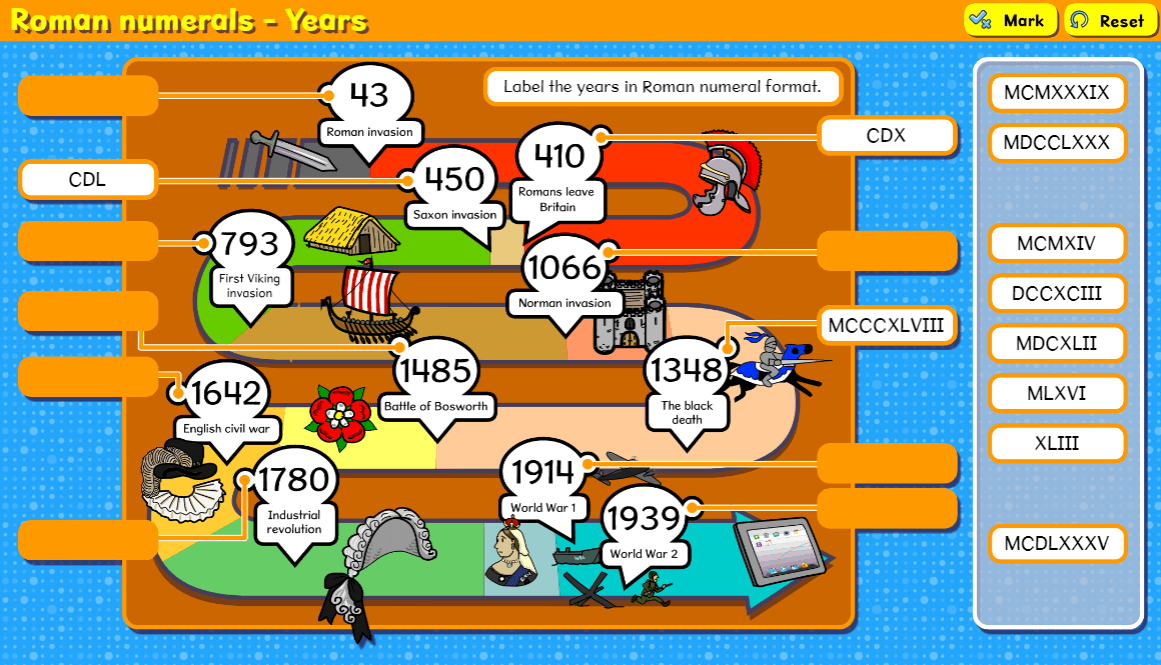
The rules of Roman numerals can be difficult to remember, so we suggest embedding the learning with our flashcards first, before reinforcing the skills with our Roman numerals – Years interactive worksheet activity.
Year 6
In Year 6, pupils need to be able to:
- Read, write, order and compare numbers up to 10 000 000 and determine the value of each digit.
- Use negative numbers in context, and calculate intervals across zero
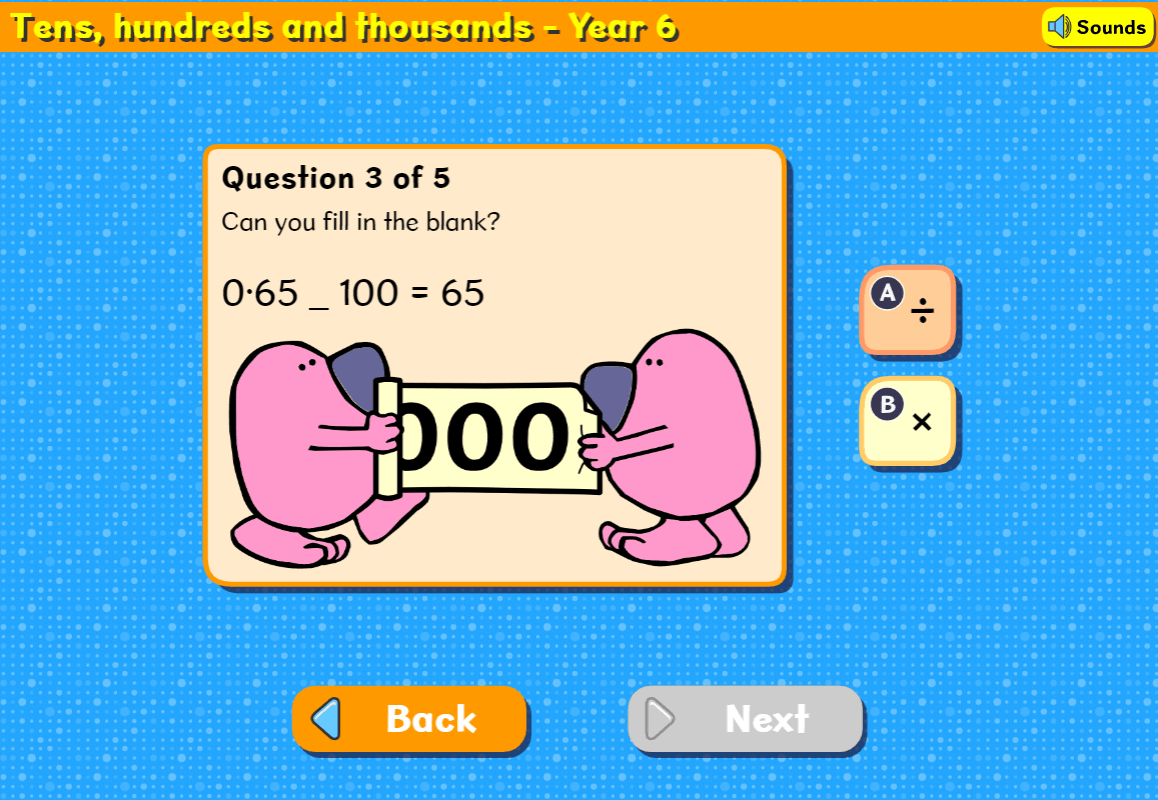
Busy Things’ Tens, hundreds and thousands quiz will ensure your pupils are on the right track with the first learning objective.
As with all our quizzes, if you assign pupils a quiz, they will receive the same set of questions. Great for formative assessment!
Summary
We hope you’ve found our step-by-step guide to our place value activities useful and understand how they, along with the many other activities we have in this area, can help you build on your pupils’ knowledge. Take a look at the suggested activities yourself – we’ve made them free to play, so just click on their names within the text to access them – and see how your class respond.
If you’re already a Busy Things subscriber, or trialing Busy Things, you’ll be able to find each of the activities by searching ‘place value’ or typing in the activity title into the Search tool.
If you’ve not got a login, it’s quick and easy to set up a free trial. Simply click here and you’ll get 28 days free access to try out these (and all our other) activities without any obligation to subscribe.